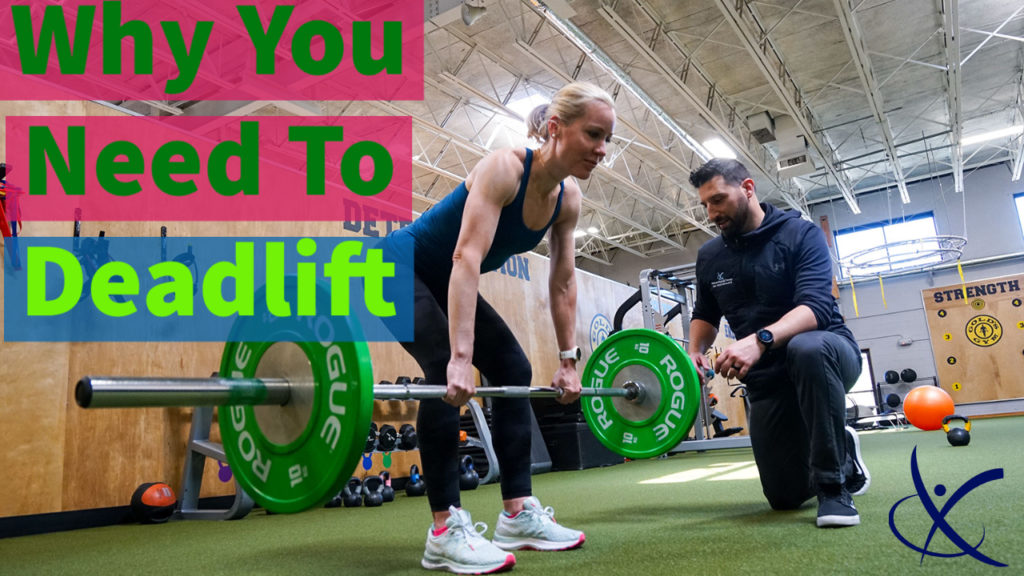Why You Need to Deadlift
The deadlift is the boogeyman exercise that you should be rotating into your workouts. I say boogeyman because most novice individuals have a misinformed knee-jerk reaction to this movement. “I always thought deadlifting was bad for you.” This comment and its variations are all too frequently spoken when I’m talking to clients with back pain or people who have never been taught how to exercise properly. It’s time to put that notion to pasture. You don’t get hurt deadlifting. You get hurt deadlifting incorrectly. Deadlifting is a staple must-do exercise for anyone. Period.
This hip hinge variation is a forgotten movement that is, in actuality, a foundational movement pattern for anyone who sits in a chair, picks things up from the ground, or carries objects such as laundry baskets, groceries, children, dogs, etc. Do you fit into that category? Then listen up muchachos y muchachas! There is no need to be scared of this lift, or be intimidated by it. There is no shortage of resources out there to help unpack it and demystify it. Perhaps you just need a nudge in the right direction, which is presumably why you clicked on this link, yes? Perfect!
In terms of compound lifts, we mean that your knees bend and your hips hinge backward. Some movements can be more knee dominant, stressing the knees more (squats), and some movements can be more hip dominant, challenging the hips and low back more, like a Romanian deadlift (RDL). Both are important but can slide more to the extreme ranges on the movement scale (I said can, not definitely do). The deadlift is a movement that somewhat bridges that gap and is an excellent choice for someone to build capacity and tolerance to movements.
The ability to lift weight from a low position is crucial for building resilience to daily life demands. Most individuals who have back pain, or who “throw their back out,” have “discs slipped,” muscle spasms, etc don’t have the correct skill or strength provided by this movement pattern. Obviously, the goal is to work towards deadlifting in order to minimize those risks. This movement strengthens the legs, hips, and spine by gradually increasing weight or loads from a low position. With proper technique/coaching, you can progress to heavier weights like any other exercise. And that is where the magic happens. Just as a bench press or pushups strengthen your arms and chest, the deadlift and its variations will provide you with longevity and pain-free function for an area that is all too commonly injured in society. Things don’t just go downhill because of an arbitrary age. Your body can be resilient if you give it the attention it requires.
So don’t be scared. Watch some videos. Read some posts. Grab a friend. Talk to a lifting coach. Grab a hex bar or a kettlebell and start moving some weight. Start small. Start on a block. Start however you’d like, just start deadlifting for real.
We promise it’s worth the sweat. Happy Training!
